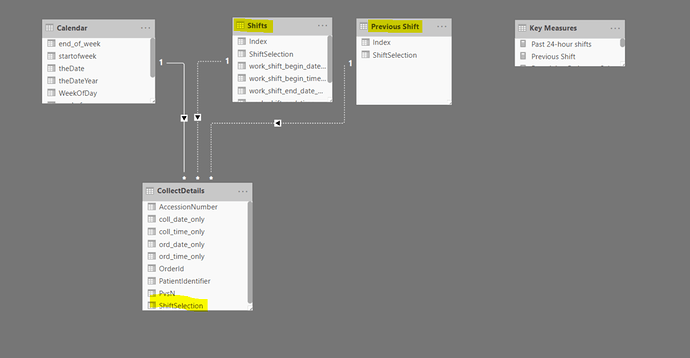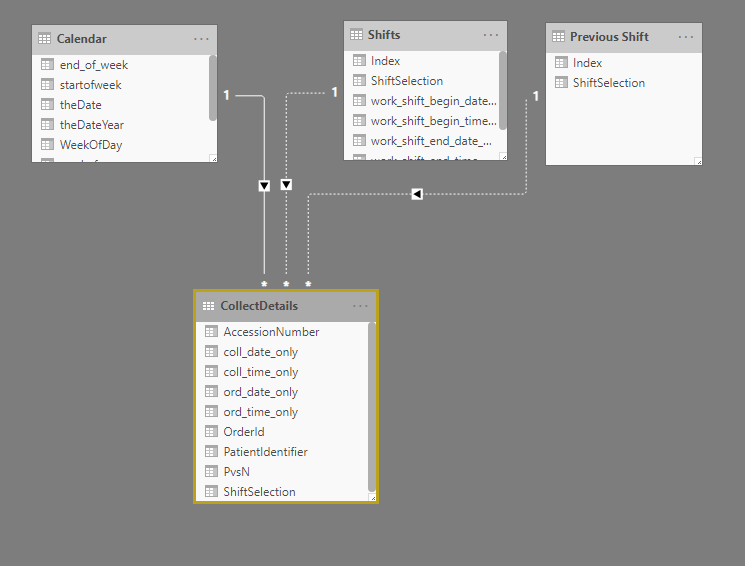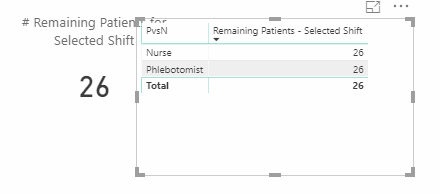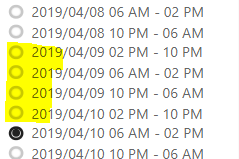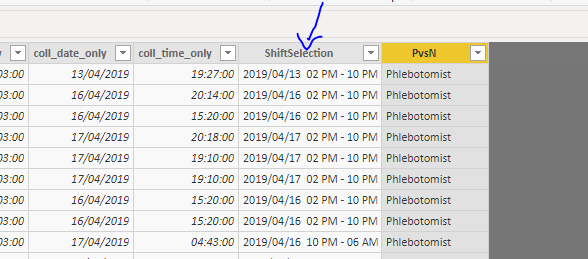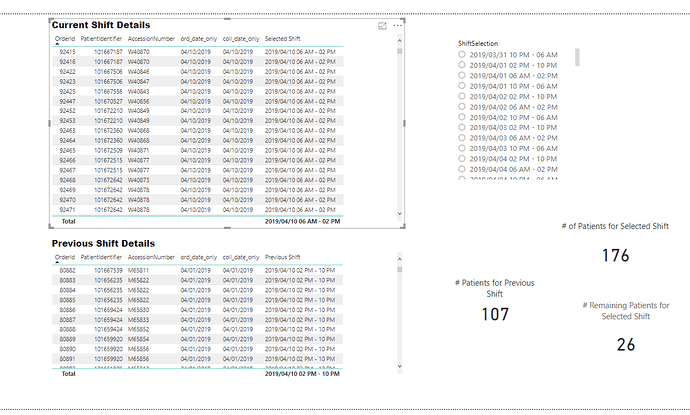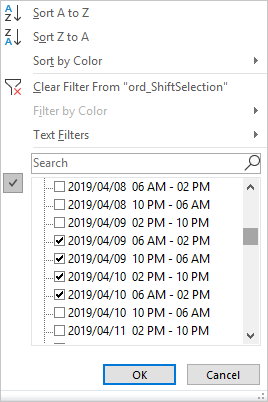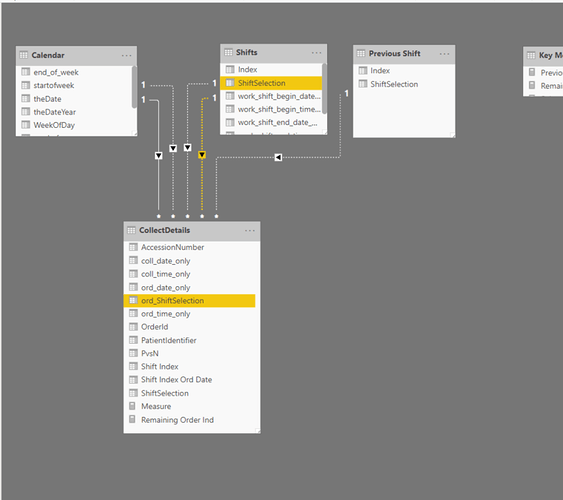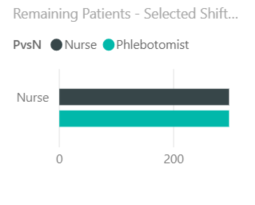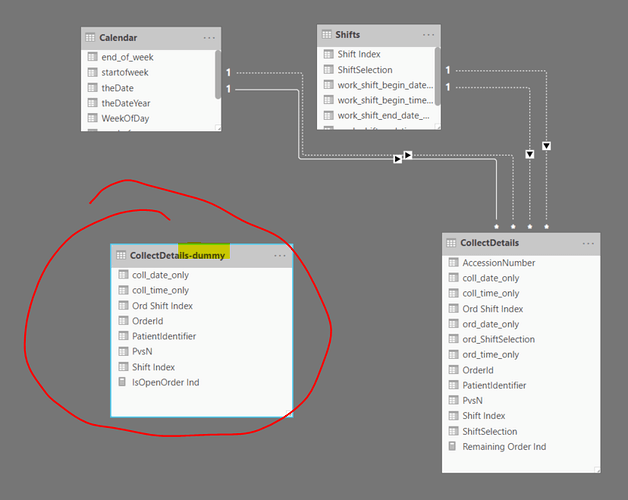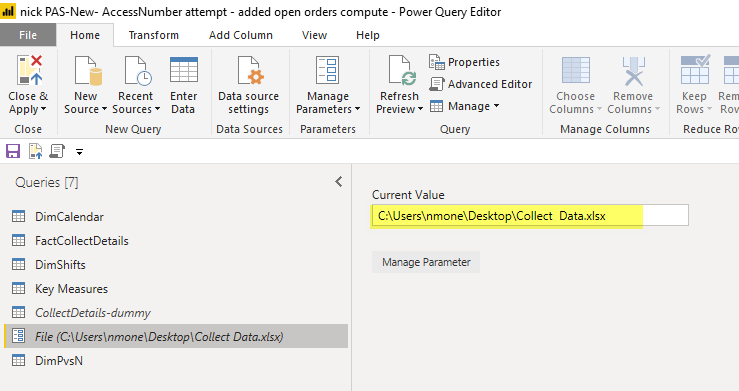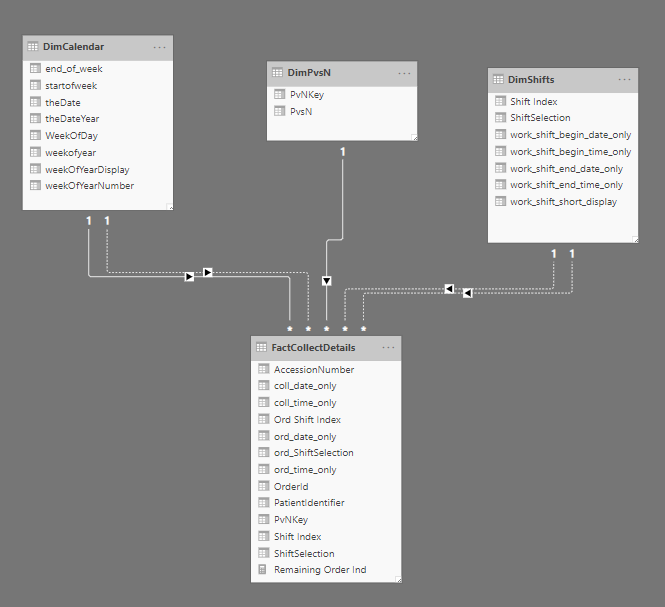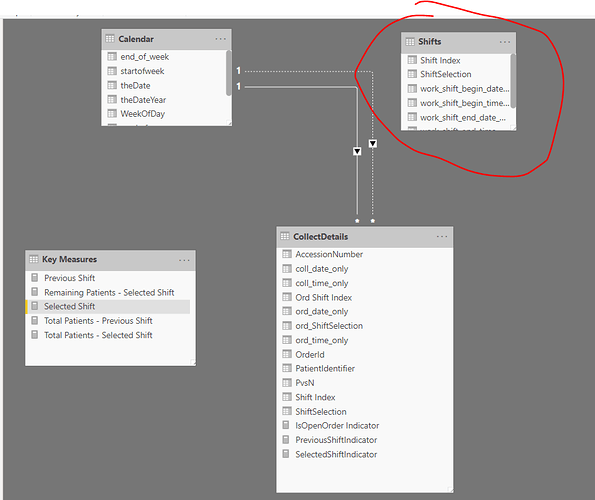Hi, there, I am looking for help & guidance to solve this problem. At the same time, also looking for training materials recommendation around this topic as I find my understanding around this time measure/slice context is pretty weak.
Currently I have a report to show current selected shift vs previous shift (Sam helped me with this too).
This has been working out great.
Now I need to throw in a new requirement to compute “Remaining Patients” and also to see the numbers break down between Nurse & Phlebotomist, for some reason, the calculated #s are same for all categories. This compute relies on Ord-date & ord-time (ord = order)
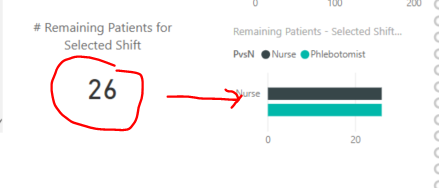
based on the current vs prior shift logic that recommended by Sam, I think the only way to fix this problem is to model the data to have the capability to slice based on ord-date. Currently the shift information is generated based on Coll-Date & time (collection date)
Hence to fix this, I would need to
1- rename CollectDetails[ShiftSelection] to be CollectDetails[coll-shiftSelection]
2- Add a new column CollectDetails[ord-shiftSelection] - where the shiftSelection data is generated from ord-date & time information.
Am I on the right track ?
PBIX is here. PAS-New- AccessNumber attempt - added open orders compute.pbix (1.1 MB)
